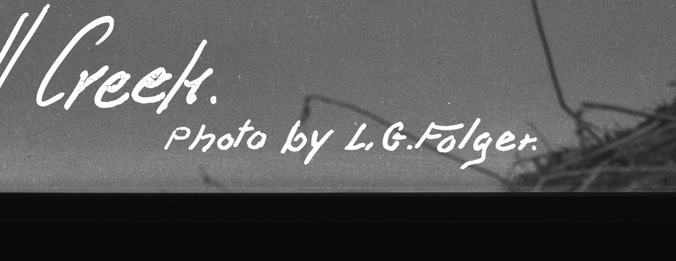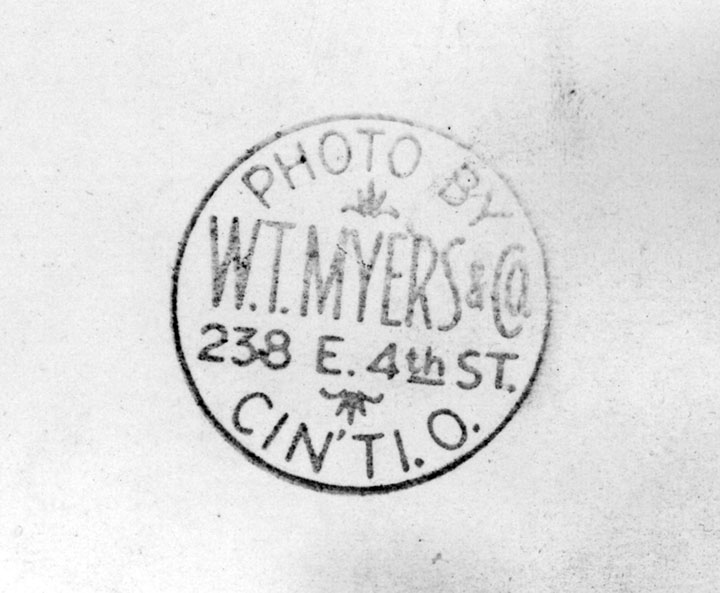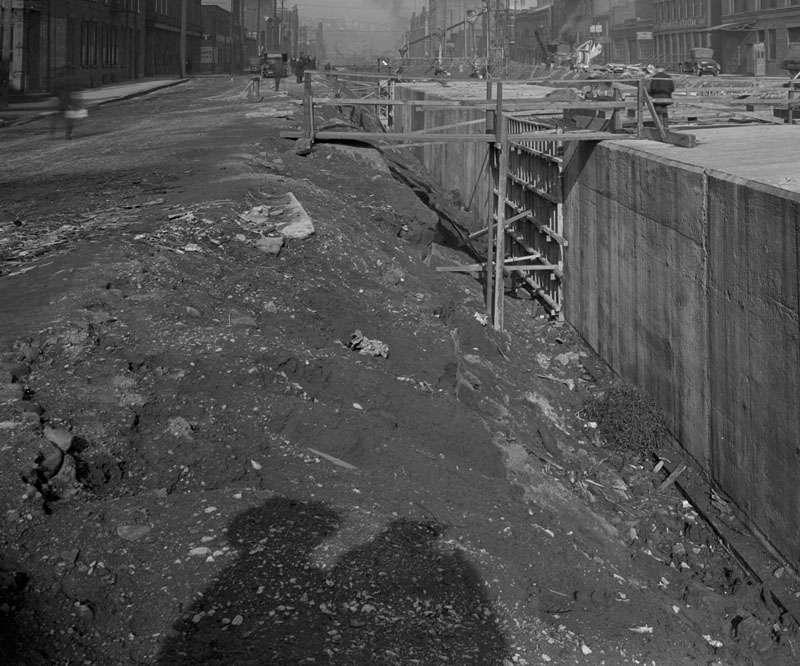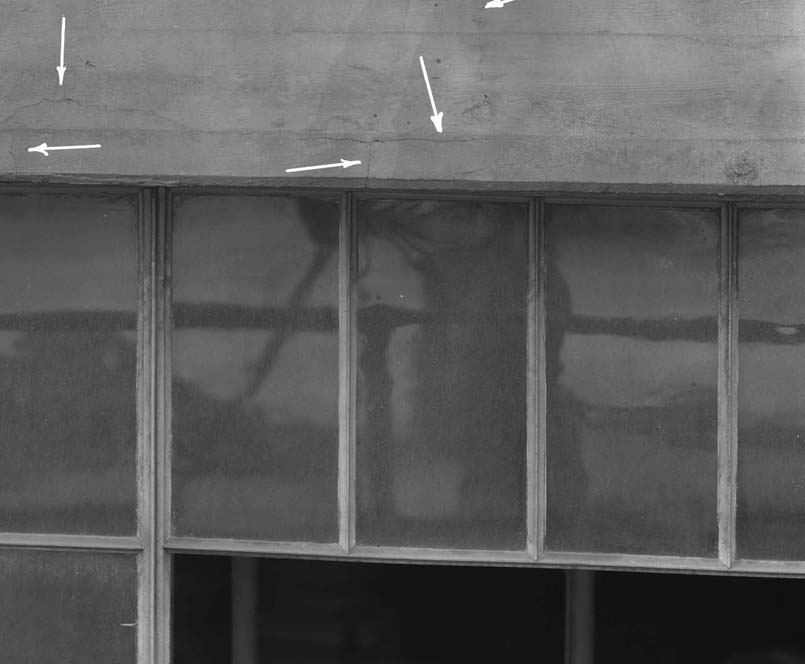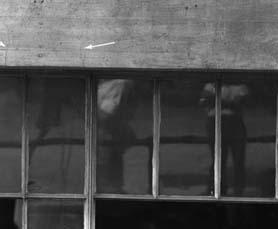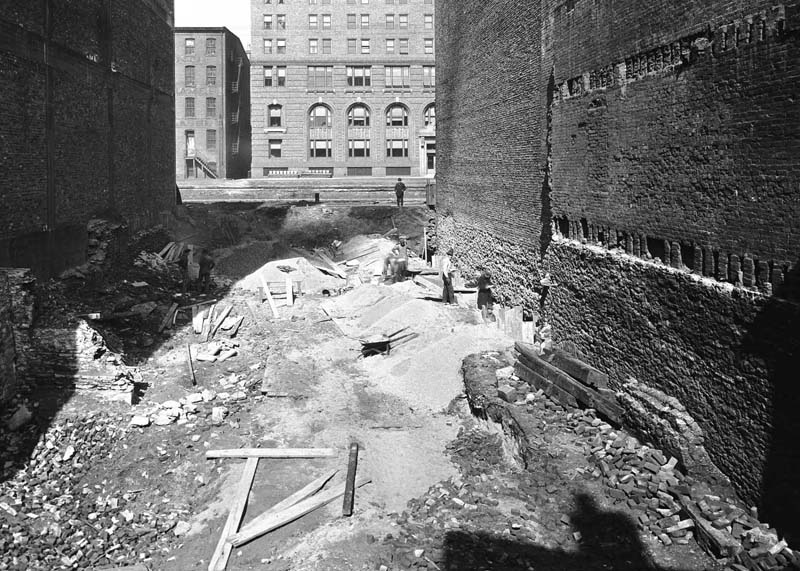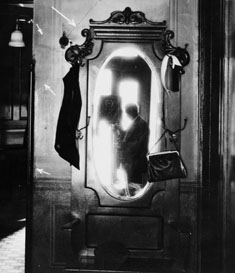By: Angela Vanderbilt
As I’ve mentioned in earlier blog postings, the identity of the subway and street improvements photographer – or more likely, photographers, due to the 30-year time span of the collection – was not known at the outset of our digitization project. As more negatives are sent for scanning, we’ve gotten closer to revealing the identity.
Just last week, our scanning service came across a negative with “Photo by L.G. Folger” written at the bottom, below the date and location of the photograph. Very exciting news! This same name has also been found on the back of printed photographs. This is definitely a step in the right direction, considering it was found written directly on a negative as well as on prints! Other prints have a round stamp on the back with the information “W.T. Myers & Co., 238 E. 4th St., Cincinnati, Ohio”.
Very little information is available about these two men, but a search of the Williams’ City Directories on the Cincinnati Public Library’s website shows both names listed as photographers from the 1910s through 1940, the same time span that our collection covers.
Lewis G. Folger is first listed with “photo” following his name in the 1912 Cincinnati directory. In 1919, he is listed with “clk and photo engineer dept. Dept. of Public Service” after his name. Folger appears to have been the main photographer for the subway construction images in the collection. Folger continues to be listed as a photographer until 1941, when “photog City Purch Dept” appears after his name.
W.T. Myers & Co. first appears in the Cincinnati City Directory in 1918. The address from the stamp appears for all entries up to 1938, after which only a home address is listed. The stamp has been found on the backs of images depicting the street improvement construction project during the 1930s – 1950s.
Although we’ve not found a snapshot of the photographer himself (or, themselves) of any better quality than the backlit silhouette image from the interior house photographs, there are several images of the photographers’ shadows, reflections caught in windows, and the camera captured in a mirror. The reflections, unfortunately, are obscured, and the shadows distorted, but we do get a good idea of the type of camera being used to take the photographs.
The photographers were using a field view camera set on a tripod to expose the individual sheets of 8” x 10” nitrate and acetate film. Although large and cumbersome, large format field view cameras allowed the photographer to capture a greater amount of detail, as well as allowing them to include the immense expanse of the construction projects. The result is the incredible photographs available to us in the Subway and Street Improvement Projects collection, thanks to the photographic talents of L.G. Folger and W.T. Myers.
This project is funded by a grant for $60,669 through the Library Services and Technology Act, administered by the State Library of Ohio.

